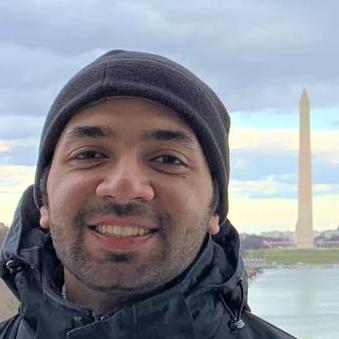Projects
Innovations at the Intersection of Neuroscience and Technology
Welcome to my projects portfolio. Here you’ll discover how I’m leveraging technology to advance neuroscience research and solve complex problems.
Research Projects
Neuroscience Research
Coupled Dynamics in Taste Processing (2023)
Investigated the coordination of taste-evoked activity between the basolateral amygdala (BLA) and gustatory cortex (GC), demonstrating that these regions act as a coupled network during taste processing. This research revealed that sudden transitions in neural activity occur near-simultaneously in both regions, suggesting collective processing in a distributed neural network. The work provides novel insights into real-time communication between brain regions during sensory processing.
Key Findings:
- BLA and GC response magnitudes covary across trials
- Epoch-specific changes in phase coherence between regions
- Near-simultaneous transitions despite trial-to-trial variability
- Evidence for recurrent attractor network dynamics
Publication: Journal of Neuroscience, 2023
Illness Modulation of Taste Responses (2022)
Examined how illness states alter gustatory cortical responses in rats, revealing that LiCl-induced sickness reduces taste response magnitudes and discriminability while enhancing palatability-related coding. This research demonstrates how internal states profoundly impact sensory processing and consumption decisions.
Key Findings:
- Illness alters 7-12 Hz LFP power in gustatory cortex
- Reduced taste discriminability during illness
- Enhanced palatability coding reflecting “good-bad” simplification
- Direct link between neural changes and consumption behavior
Publication: PLOS Biology, 2022
Dynamic Neural Function (2021)
Contributed to a comprehensive review challenging the notion of fixed neural function, arguing that neural populations serve different functions across time scales. This work emphasizes the importance of temporal and network context in understanding neural computation.
Key Insights:
- Neural responses are dynamic across multiple time scales
- Function of neuron groups changes from moment to moment
- Importance of temporal context in neural function attribution
- Network state determines functional role of neural populations
Publication: Current Opinion in Physiology, 2021
Cardiovascular & Pharmacology Research
AT2 Receptor Agonist in Obesity (2021)
Investigated the effects of novel AT2R agonist NP-6A4 on cardiac function in obese rats, demonstrating suppression of inflammatory cytokine networks and attenuation of cardiac damage. This research revealed a unique anti-inflammatory mechanism that could protect heart tissue from obesity-induced damage.
Key Findings:
- NP-6A4 attenuated cardiac dysfunction and fibrosis
- Suppressed 19 inflammatory cytokines including those involved in cytokine storms
- Activated novel anti-inflammatory network of 21 proteins
- Protective effects independent of blood pressure modulation
Publication: Frontiers in Pharmacology, 2021
Cardiovascular Cell Stress Response (2015)
Compared effects of various cardiovascular drugs on nutrient-stressed cells, identifying unique protective mechanisms of AT2R agonist NP-6A4. This work revealed the AT2R-MCL-1 axis as a critical pathway for cardiovascular cell survival under stress conditions.
Key Findings:
- NP-6A4 increased cell viability through AT2R activation
- Enhanced MCL-1 expression critical for cell survival
- Distinct cellular response signatures for different drug classes
- Novel mechanism for cardiovascular protection under nutrient stress
Publication: PLOS ONE, 2015
Rapamycin Effects in Diabetes (2017)
Examined differential regulation of cardiac function and intracardiac cytokines by rapamycin in healthy versus diabetic rats, revealing fundamental differences in immune response that affect treatment outcomes.
Key Findings:
- Differential cytokine modulation in healthy vs. diabetic hearts
- Rapamycin improved some cardiac parameters but reversed others in diabetic rats
- Suppression of intracardiac immune defense in diabetic models
- Importance of disease state in determining drug efficacy
Publication: Oxidative Medicine and Cellular Longevity, 2017
Software Engineering Projects
Featured Development Tools
blech_clust
Role: Developer and Core Maintainer
The primary data extraction and processing pipeline for the Katz Lab at Brandeis University. As a core maintainer, I contribute to the development and maintenance of this critical infrastructure used for neuroscience research data analysis.
Resources:
AutoSlide
A semi-supervised machine vision pipeline for calculating interstitial fibrosis from histological samples. This project has revolutionized our lab’s analysis workflow, reducing processing time by 80% while maintaining high accuracy.
BlechRNN
An innovative recurrent neural network implementation for analyzing temporal patterns in neural data. This tool has enabled new insights into taste processing dynamics.
Automation & Workflow Tools
- PR Blog Bot: A sophisticated bot for generating blog posts on pull requests, highlighting updates and new exciting features to our codebase.
- Blech GitHub Bot: An automation tool that has streamlined our lab’s GitHub workflow, saving approximately 5 hours per week in manual tasks.
- Auto Commit: A tool for automatically generating informative git commit messages that has improved our team’s version control practices.
Data Analysis & Visualization
- Video Movement Frequency: A specialized tool for analyzing movement frequency in videos, crucial for behavioral neuroscience research and monitoring vital signs under anesthesia.
- Freq Monitor Streamlit: An interactive frequency monitoring dashboard built with Streamlit, making complex data accessible to non-technical team members.
- PyTau: A Python library for changepoint calculations that has simplified a common analysis task in our research.
Educational & AI Projects
- Teachables: A platform for disseminating educational content that has been used in two graduate-level neuroscience courses.
- NeuRecommend: A classifier for automated/ semi-automated neural data extraction.
- KatzGPT: A specialized GPT-based chatbot for answering questions about taste neuroscience.
- OCR Database: A database system for optical character recognition that has digitized over 1,000 pages of historical research notes.
Collaborate With Me
I’m always looking for collaboration opportunities and feedback on my projects. If you’re interested in working together or have questions about any of these tools or research, please contact me. I’m particularly interested in partnerships that bridge neuroscience research with cutting-edge technology.
